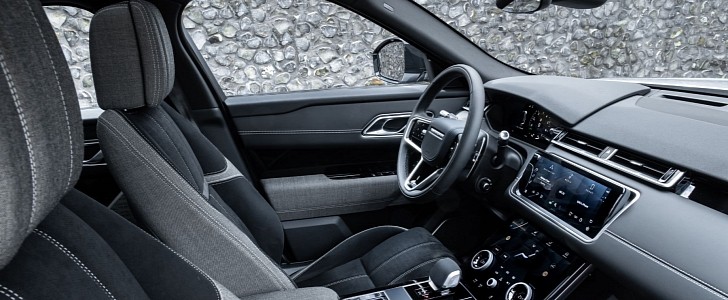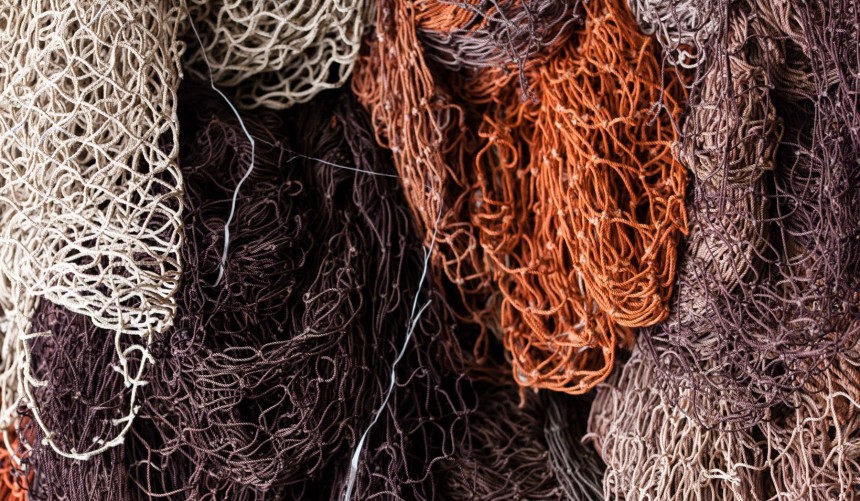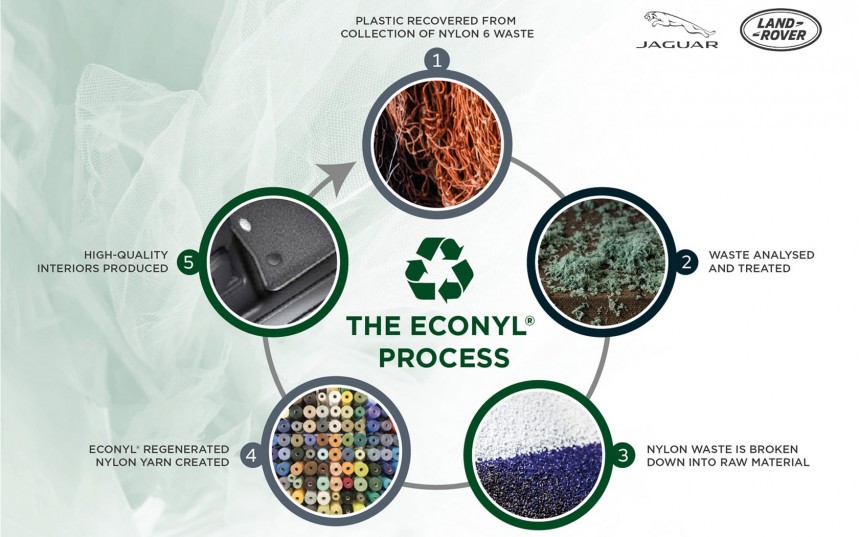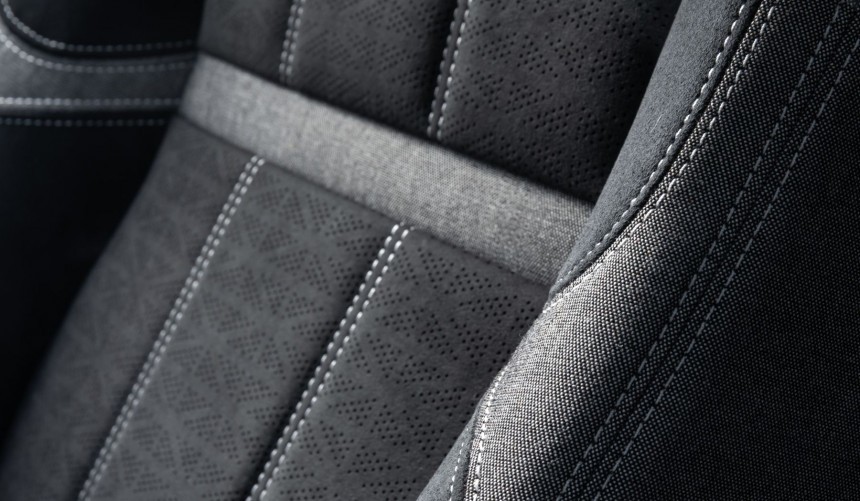Recognizing that the automotive industry should do much more than just switch to zero-emission powertrains in order to protect the environment, Jaguar Land Rover is set to use recycled plastic waste as a base for the next generation of its luxury interiors.
Recycling should be a huge part of our lives by now but for certain manufacturers, using plastic is a cheaper and faster solution. Luckily, some of them chose to set an example, spending time and money on clean, renewable solutions.
Jaguar Land Rover (JLR) has recently revealed plans to use ECONYL nylon to develop high-quality interiors made from the ocean and landfill waste.
The company’s next-generation vehicles will feature floor mats, and interior trims made from this fabric, which is sourced from recycled industrial plastic, offcuts from clothing manufacturers, or fishing nets abandoned in the ocean.
Created by Aquafil, a global leader in the synthetic fibers industry, this regenerated nylon has already been used by fashion designers, sportswear, and luxury watch brands to manufacture items like handbags, backpacks, or watch straps.
The company claims that it recycles around 40,000 tons of waste from all over the world every year and that this process reduces the global warming impact of nylon by 90%.
ECONYL is produced in Aquafil’s state-of-the-art treatment centers, where the waste is analyzed, treated, and prepared. It’s then transported to a chemical plant, where it is broken down into raw material using depolymerization.
Any resulting byproducts like metallic materials or copper sulfate used to prevent seagrass from growing on fishing nets are removed and sent to other recycling companies.
The subsequently regenerated nylon polymer has the same chemical makeup and strength characteristics as the conventional material, which means it can be easily processed into fiber for carpet flooring and textiles.
This means that future Jaguar and Land Rover models will feature environmentally conscious and sustainable interior items that will also retain their premium quality and durability.
A premium, sustainable Eucalyptus textile is already used in the Range Rover Evoque, while Jaguar’s all-electric I-PACE and the Range Rover Velar feature an optional Kvadrat interior trim, a high-quality fabric that combines robust wool with a suede cloth made from recycled plastic bottles.
“We place a great deal of focus on the creation of new sustainable materials, using the latest, most innovative techniques and textiles. Minimizing waste, re-using materials, and reducing carbon emissions sits at the heart of our Destination Zero mission. This pioneering materials research is one of the key ways we’ll achieve this and is an integral part of our design offering to our customers,” said Adrian Iles, senior engineer of interior systems at Jaguar Land Rover.
Destination Zero is JLR’s latest internal strategy that focuses on a future with zero accidents, zero emissions, and zero congestion. As part of this strategy, the company achieved carbon-neutrality for all their UK-based plants and will continue to develop zero-emission powertrains and advanced safety features for the next generation of Jaguar and Land Rover vehicles.
Although there is still much more that can be done to protect the environment, we hope that JLR’s use of sustainable materials sets an example for other automakers that can benefit from the use of such fabrics.
Jaguar Land Rover (JLR) has recently revealed plans to use ECONYL nylon to develop high-quality interiors made from the ocean and landfill waste.
The company’s next-generation vehicles will feature floor mats, and interior trims made from this fabric, which is sourced from recycled industrial plastic, offcuts from clothing manufacturers, or fishing nets abandoned in the ocean.
The company claims that it recycles around 40,000 tons of waste from all over the world every year and that this process reduces the global warming impact of nylon by 90%.
ECONYL is produced in Aquafil’s state-of-the-art treatment centers, where the waste is analyzed, treated, and prepared. It’s then transported to a chemical plant, where it is broken down into raw material using depolymerization.
Any resulting byproducts like metallic materials or copper sulfate used to prevent seagrass from growing on fishing nets are removed and sent to other recycling companies.
This means that future Jaguar and Land Rover models will feature environmentally conscious and sustainable interior items that will also retain their premium quality and durability.
A premium, sustainable Eucalyptus textile is already used in the Range Rover Evoque, while Jaguar’s all-electric I-PACE and the Range Rover Velar feature an optional Kvadrat interior trim, a high-quality fabric that combines robust wool with a suede cloth made from recycled plastic bottles.
Destination Zero is JLR’s latest internal strategy that focuses on a future with zero accidents, zero emissions, and zero congestion. As part of this strategy, the company achieved carbon-neutrality for all their UK-based plants and will continue to develop zero-emission powertrains and advanced safety features for the next generation of Jaguar and Land Rover vehicles.
Although there is still much more that can be done to protect the environment, we hope that JLR’s use of sustainable materials sets an example for other automakers that can benefit from the use of such fabrics.









